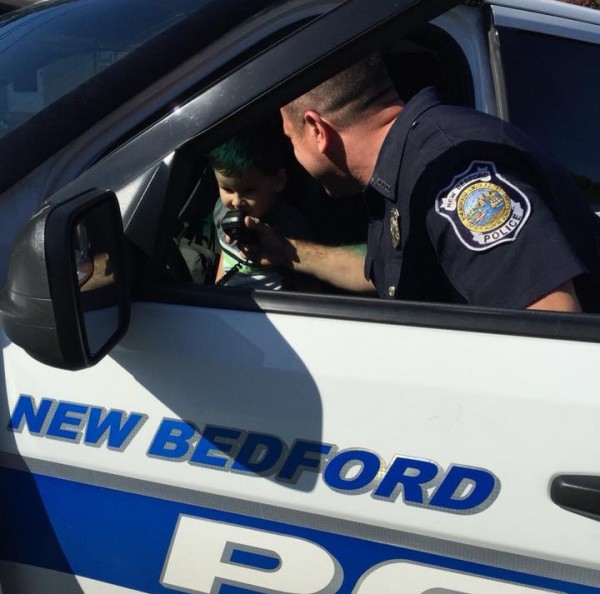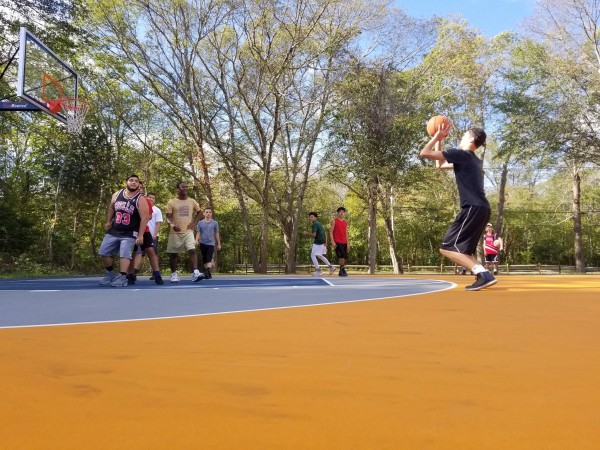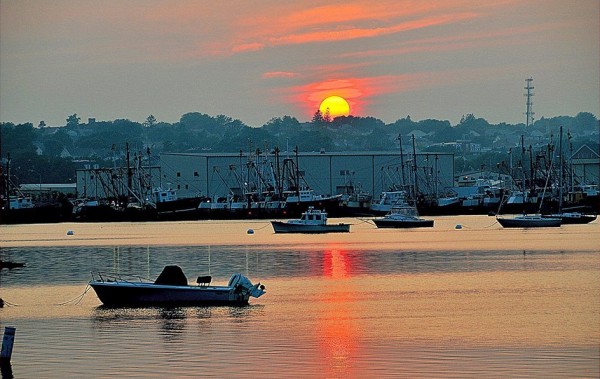Opinions are like… ‘tailpipes’; everybody has got one, and they usually stink. We are all entitled to formulate our own opinions, just as we are also entitled to either adhere to or refute the opinions of others. The important thing is that collectively we continue to work towards a more fruitful existence as a society. Our disagreements are ultimately the beginning of our work towards a better life. And so I believe we owe it to ourselves to constantly be seeking new perspectives to expand our understanding of the world and humankind. We owe it to ourselves to ask questions.
And for those in positions of ‘extended influence’-our societal decision makers-there is an added importance to understanding all points of view. For our medical professionals, politicians, legislators, and law enforcement, there is an added importance to not only asking questions-but to also be seeking new answers to those questions. Our decision makers must understand all points of views to the best of their ability.
And so, it is of vital importance that people such as New Bedford Police Chief Joseph Cordeiro seek new and more valid perspectives; specifically in regards to his highly questionable stance on cannabis and recreational cannabis regulation.
A couple of months ago, New Bedford Police Chief Joseph Cordeiro spoke with New Bedford Guide to address various city-wide issues. During the 30 minute interview, Chief Cordeiro was asked to address legal cannabis (medical and recreational) as a potential solution to the city’s opioid problem. You can check out the full interview here: https://www.youtube.com/watch?v=lbsNeCdRRCI (cannabis is brought up at the 19:30 mark in the video).
While acknowledging medical cannabis would be more ‘frugal’ for the city, Chief Cordeiro had a much different opinion when it came to recreational cannabis in New Bedford:
“I think the medicinal piece would probably be more frugal. But the recreational-I believe is going to compound our drug issues as a whole…It seems that the timing is off by throwing more gasoline into the fire when we are already struggling with an addiction issue across the country.”
Chief Cordeiro also referenced Colorado as having 4x more “cannabis-driven” ER visits and an uptick in motor vehicle accidents since legalization of recreational marijuana. Additionally, when it comes to cannabis edibles, Cordeiro fears that a lack of being able to detect THC like alcohol in a person’s system would make it harder to keep our streets safe. Recreational cannabis in New Bedford would also contribute towards the city’s “social problems” according to Cordeiro, as he feels landlords and unsuspecting citizens would be subjected to being around a smoker’s environment unwillingly.
Therefore, as a cannabis advocate, I wanted to take some time to address Chief Cordeiro’s seemingly misguided stance on cannabis.
Here are 5 questions for New Bedford Police Chief Joseph Cordeiro (and citizens) to consider:
Questions 1 and 2:
-How can one realistically compare cannabis and alcohol?
-How exactly are roads unsafe because of cannabis?
As far as the consumption of cannabis edibles goes, Chief Cordeiro is concerned that an inability to ‘detect THC like alcohol’ in a person’s blood would potentially mean roadways would become unsafe. The fear is that the perceived simplicity of consuming cannabis edibles such as ‘marijuana lolli-pops, candies, cookies, and traditional brownies’ would drive people to consume an unsafe amount of THC while they operate motor vehicles- therefore causing more motor vehicle accidents and emergency room visits.
This would also suggest that a considerably large amount of drivers that have THC in their blood would be direct causes for an increase in motor vehicle accidents. Chief Cordeiro also cited Colorado as having 4 times as many state wide emergency room visits that were ‘cannabis-driven’, and increasing rates of motor vehicle accidents as well. Valid support for Chief Cordeiro’s claims are lacking however, as studies show that despite finding more emergency room visits and additional motor vehicle accidents in states that have legalized recreational cannabis, there is no definitive factor linking them to cannabis specifically.
The fact is that many people who were admitted to Colorado emergency rooms with THC in their system also had traces of other drugs in their system; such as alcohol and opiates. And so, it is a stretch to suggest that these emergency visit increases are “cannabis-driven”.
Earlier this year, researchers from the University of Texas at Austin published a study in the American Journal of Public Health that concluded there is “no evidence to suggest that marijuana has made roads unsafe” (https://www.civilized.life/articles/car-accidents-legal-marijuana/). The report claims that there is“no significant association between recreational marijuana legalization in Washington and Colorado and subsequent changes in motor vehicle fatality rates in the first three years after recreational marijuana legalization.” Additionally, the Highway Loss Data Institute recently conducted a study that explored the effect of recreational cannabis legalization on road safety in Colorado, Washington, and Oregon.
While the study concluded there were 4%-16% increases in insurance claims relating to collisions, it has not been scientifically proven that these upticks are associated with people getting high on cannabis (https://www.cnbc.com/2017/06/21/auto-crashes-are-on-the-rise-in-marijuana-states.html?view=story&%24DEVICE%24=native-android-mobile). Essentially, the two events are coincidental, not causal. And so, it is unfair to suggest that cannabis alone causes more people to get into accidents on the road.
Those that generally share Chief Cordeiro’s current views on cannabis might suggest that the reason there is no linking factor between these increases in crash risk and recreational cannabis legalization is because there is no reliable field sobriety test for people with THC in their systems. One could also argue that many people who get into accidents are not only on cannabis, but alcohol and or other drugs that inhibit one’s ability to drive safely.
While I concede that we should establish field tests for cannabis users, I also note that to suggest that we should be working towards methods of detecting THC like we do alcohol (or other drugs for that matter) in the bloodstream at roadside is simply ludicrous. This is the equivalent to suggesting the effects of THC on driving ability are even in the same stratosphere as the effects of alcohol on driving ability. Alcohol causes people to drive with much more risk and ignorance-and that is why science shows a correlation with blood alcohol levels and motor vehicle incidents.
The same can not be definitively said about cannabis (https://www.livescience.com/51450-driving-on-marijuana-alcohol-dangerous.html). It is clear that the effects of alcohol on driving ability should be much more concerning than those of cannabis-especially since anybody over the age of 21 can purchase alcohol at practically any corner in New Bedford.
Additionally, to suggest that the legalization of consuming recreational cannabis edibles would lead to more careless use by Massachusetts’s drivers is ignorant. Do we prohibit people from unwrapping a McDonald’s cheeseburger while they drive 65mph(+?) north on route 24 back to work? No. It is up to people to be educated enough to be aware of not only what they are putting in their body, but how much and what its effect will be on their anatomy and what they are engaging in. It is up to people to be educated on how their specific decisions impact the safety of those around them.
Cannabis is certainly more deserving of the legislation that alcohol has received for more than half a century, because the pure effects of THC alone on the average consumer’s ability to drive has been scientifically proven to have no significant effect on crash and accident risk for the average consumer. Alternatively, the effects of alcohol on driving are undoubtedly detrimental to all-yet society makes it so there is at least some tolerance for those that can’t help but being buzzed while they drive. I feel this ‘double standard’ is something we need to consider a great deal.
Questions 3 and 4:
-In what ways would legal recreational cannabis ‘compound our drug issue as a whole’?
-What is the science behind the relationship between cannabis and opiates?
Chief Cordeiro made one point in particular that I would like to wholeheartedly disagree with here. He claimed that in terms of recreational cannabis legalization in the city of New Bedford, “the timing is off by throwing more gasoline into the fire when we are already struggling with an addiction issue across the country.” He went on to say, “…the recreational-I believe is going to compound our drug issues as a whole.” Chief Cordeiro…you could not be more wrong about this.
Our drug issues are similar to those of our entire country. There is an ongoing national opiate epidemic; prescription and illegal. America comprises 5% of the world’s population while consuming 80% of the world’s opium. The American Academy of Pain Medicine notes that more than 100 million Americans suffer from chronic pain, while simultaneously, the number of opiate prescriptions has nearly doubled in the past decade (http://drugabuse.com/legalizing-marijuana-decreases-fatal-opiate-overdoses/).
Many people are either unknowingly becoming opium addicts over months and years of increasing prescribed use, or they are taking the fast track by using street heroin at alarming rates. Regardless, it is clear to us as Americans that we have an opioid addiction problem, not to mention how many Americans are avid alcohol consumers.
Marijuana contains chemicals such as Delta 9-THC, CBD, CBN, and THCV. These chemicals all offer pain relieving effects, while offering a potential solution for those who suffer from chronic pain. A study in the JAMA International Medicine Journal found that cannabis laws “are associated with significantly lower state-level opioid overdose mortality rates” (http://jamanetwork.com/journals/jamainternalmedicine/fullarticle/1898878).
While the study is specifically related to medical cannabis, the ultimate point is that the science behind cannabis as a plant supports the notion that regulation would positively influence our current drug issues. Therefore, cannabis would certainly not “compound our drug issue as a whole” as Chief Cordeiro suggests. And so I ask Chief Cordeiro; how exactly would legal recreational cannabis compound our drug issues as a whole?
It is is evident that this country has a chronic pain issue. My argument is that cannabis offers much safer alternatives to dealing with these issues, to both those who are currently on opiates and those who are not. To quote a report from Integr8 Health founder and director Dr. Dustin Sulak,
“Can cannabis be used to replace opioids in chronic pain patients? It can certainly be used to enhance the effects of the opioids. A 2016 study surveyed 244 medical cannabis patients in Michigan, where medical cannabis use was associated with an overall 64 percent decrease in opioid use, a decrease in the number and side effects of other medications, and a 45 percent improvement in quality of life.
An Israeli study from the same year found that 44 percent of 176 opioid-using patients were able to discontinue opioid therapy entirely seven months after they began smoking cannabis or eating cannabis-infused cookies. (https://www.projectcbd.org/about/plant-medicine-vs-big-pharma/americas-opiate-crisis-how-medical-cannabis-can-help)”
In this report, Dr. Sulak goes on to state that abstaining from drugs simply does not work for everybody. Many people have legitimate health concerns that require taking something to mitigate the effects. The key is to focus on a term that Sulak refers to as “harm reduction”; replacing a harmful substance with a safer one. And so, the suggestion is that cannabis users, over time, require the same or less of a dose of prescribed opiates to deal with their pain. In fact, many cannabis users are able to kick opiates altogether with little time, as the health benefits of consuming cannabis as prescribed are numerous.
As if this was not convincing enough, a 2009 study (https://www.ncbi.nlm.nih.gov/pubmed/19444734) found that cannabis users were staying in treatment programs for more than twice as long as non cannabis users. Additionally, this study found that intensive behavioral therapy helped those who also used cannabis, but didn’t help non cannabis users. Cannabis has been shown to not only provide a more synergistic reduction of pain when taken with opiates, but to also treat symptoms of opiate withdrawal and prevent opiate tolerance building. These are hardly signs that cannabis legalization would make New Bedford’s drug problem worse, as Chief Cordeiro suggests. In fact, these are signs that cannabis would help this country’s drug problem.
Question 5:
How can the police of New Bedford work to make the city and its roads safe for all while allowing people with THC in their system to safely navigate the public ways?
I would like to acknowledge that recreational cannabis legalization and regulation in Massachusetts would absolutely require a great deal of work on the part of our law enforcement. We as citizens need our police to do the best possible job they can do to protect us and our civil liberties. And so perhaps you are wondering how our police would be able to do just that if something as unconventional as legal recreational cannabis were to hit the streets of New Bedford; a city with numerous social issues, such as violence, addiction, and corruption.
I believe that this task begins with properly educating the masses on the facts behind the science of cannabis as a whole; not just medicinal or recreational. And from there, people should be given the liberty to decide what they put in their body and for what reason. The hope is that if most people are properly educated, then they should be trusted to make the appropriate decision for not only their own benefit, but for the benefit of those around them.
Cannabis is an astronomically safer alternative to opiates and alcohol, and at best is a more than adequate means to treat chronic pain for hundreds of millions of Americans. In some cases, cannabis could even get people off of opiates altogether. Therefore, making it easier to access by regulating recreational cannabis would help the majority, in my opinion.
If recreational cannabis were regulated in New Bedford so that anybody over the age of 21 were able to purchase cannabis in legal establishments (not on the streets) , there would need to be measures put into place to ensure the safety of all people. I believe the New Bedford Police would have to implement a more valid means to test roadside THC levels and its effect on specific drivers’ abilities to operate a motor vehicle.
Perhaps police recordings of ‘baseline results’ pertaining to motor skills and mental capacity/communicative ability would be a solution; so that police officers would have a more reliable way to test a THC-positive person’s ability operate a motor vehicle. It should go without saying that New Bedford Police should not be monitoring and responding to THC levels in bloodstreams the same way they do with alcohol or other drugs. The key is to find a way to monitor “how much cannabis is too much” for a specific person to be driving a car.
At the same time, this writer is in favor of punishments for people who are found to be “too high” at the time that they are found to have caused a motor vehicle accident. Punishments should also be implemented to discourage people from selling cannabis illegally on the streets; the definition of cannabis regulation, essentially. This is how we would encourage people to be properly educated and to properly consume cannabis. Because the alternative would then be to possess ignorance towards what one would be doing to their own body and unsuspecting citizens, leading to pertinent consequences.
Additionally, if the citizens of New Bedford had public safe places to consume cannabis, then worries such as Chief Cordeiro’s that non cannabis users would have to put up with the effects of cannabis without desire would be put to rest. Alcohol bars and tobacco (or hookah) bars exist, so why not cannabis clubs and/or parks?
Chief Cordeiro mentioned property owners as potentially being at risk of having tenants that would consume cannabis at the dismay of other tenants. I feel that this is an unreasonable concern-as landlords should have the responsibility of ensuring their tenants are aware of the dangers of “second-hand smoke”. It should be up to landlords to either allow or disallow tenants to consume cannabis indoors. And if tenants are not able to consume indoors, then they should be able to consume outdoors in designated areas so that they do not impede on the basic rights of others to not be ingesting foreign chemicals against their will.
Ultimately, people are going to consume cannabis regardless. So why not do all that we can do ensure those people can do so safely while those that do not aren’t subjected to deal with the decisions of their peers?



